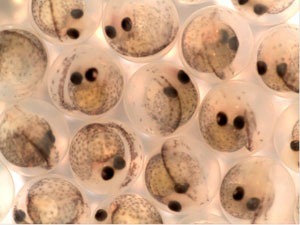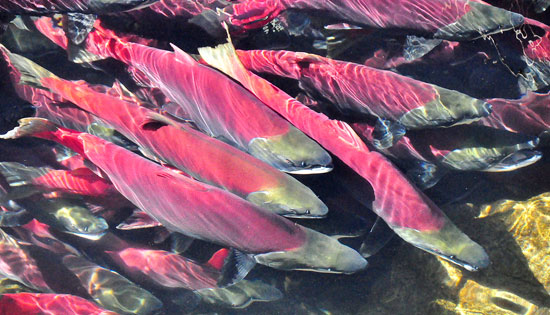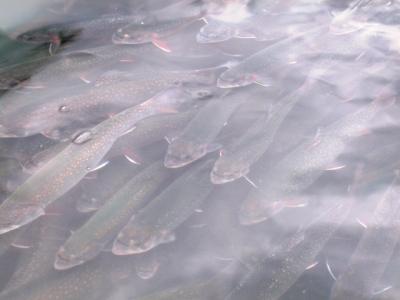New York Sea Grant study investigates VHS transmission
0
Walleye eggs 14 days after fertilization.
It’s non-treatable, widespread, and considered one of the most significant threats to Great Lakes fish. The viral hemorrhagic septicemia virus eats away the cells that line blood vessels in fish, leading to hemorrhaging, anemia, and other symptoms. The devastating virus has now been detected in 28 fish species located across all five Great Lakes.
In the interest of protecting fish stocks from the virus, a two-year New York Sea Grant-funded study has focused on the transmission process of VHSV. The goal is to develop better decontamination methods and safety procedures.
The fish pathogen endangers the multi-billion dollar Great Lakes fishing industry. A New York Sea Grant article elaborates on its impact:
[T]he Great Lakes isolate of VHSV (VHSV Genotype IVb) has been linked to illness and significant mortalities in several Great Lakes fish species. The most dramatic mortality event involved the death of several hundred tons of freshwater drum in Lake Erie in 2006. Other fish species suffering serious losses have included round goby, gizzard shad, yellow perch, muskellunge (a kind of pike), walleye, and smallmouth bass.
Researchers in the NYSG study are using genetic (quantitative RT-PCR) and cell culture studies to determine whether the virus can be passed on to fish embryos. Infected embryos could be devastating to fish hatcheries and aquaculture facilities that collect eggs from the wild, though the virus has thus far not been detected in any such facility in North America.
The study has also yielded what lead researcher Dr. Paul Bowser says is an unexpected but significant finding regarding the VHSV disinfection process used on fish eggs.
This disinfection process, he explains, utilizes a disinfectant solution such as iodophor, with the active ingredient iodine for killing bacteria and viruses. Many fish eggs, however, have a sticky quality to them that allows them to adhere to substrates beneath water bodies. For these eggs, scientists must first apply tannic acid to keep them from clumping together inside an incubator. Bowser and his team discovered that if all this acid is not removed before the disinfection process, it could neutralize the disinfectant, thus risking the spread of the virus.
“Sometimes the benefit from a research project may come from an unexpected direction,” Bowser said. “Our opinion is that this unexpected finding is absolutely critical to any egg disinfection process that involved tannic acid and an iodophor.”
To learn more about the New York Sea Grant’s efforts to combat VHSV, read more coverage here.
Under the Microscope with VHS [New York Sea Grant] NYSG-funded Researcher Awarded Top Honors from American Fisheries Society [New York Sea Grant]
Image Credit: Courtesy of Dr. Emily Cornwell, Aquatic Animal Health Program, Cornell University













